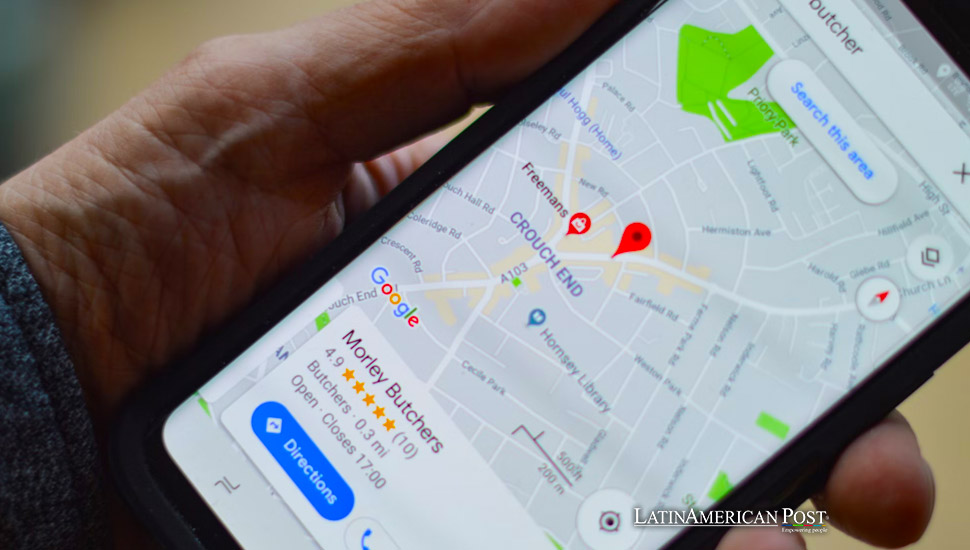Google Maps Invests in Economic and Tourism Development in Southeast Mexico

Celebrating its 15th anniversary, Google Maps continues revolutionizing navigation in Mexico. Critical updates include mapping airports, highways, and public transportation systems, enhancing travel and exploration for millions
Google Maps is celebrating its 15th anniversary in Mexico. Since its launch in 2005, Google Maps has become an essential tool for navigation and exploration, helping millions of users worldwide find directions, discover points of interest, and plan efficient routes. Over these years, the platform has continually evolved, incorporating advanced features like Street View, real-time traffic updates, and personalized recommendations, solidifying its position as the leading map service globally. Additionally, artificial intelligence plays a significant role in these advancements.
Wired spoke with Sebastián Hiernaux, Head of Strategic Alliances for Google Maps, and Karina Alarcón, Head of Strategic Alliances for Google Search, to delve into Google’s expansion in regions like the Riviera Maya, Mérida, and Oaxaca.
Mapping the Tulum Airport
In a significant project, Google detailedly mapped the new Tulum Airport, integrating updated aerial and satellite images. This update covers critical points of interest, such as parking lots, terminals, and fixed-base operators (FBOs), significantly enhancing visitors’ experiences. The digitalization process was also optimized to ensure precise routes, avoiding unpaved roads and recalibrating algorithms for more accurate time estimates.
“Regarding the airport, we started with the basics, beginning with cartography. My team and I ensured collecting all necessary data to model the airport, updating everything related to satellite photos, especially in the Riviera Maya, where the climate can complicate the shots,” explained Hiernaux.
Mapping the Oaxaca-Puerto Escondido Highway
The new Oaxaca – Puerto Escondido highway (Ventanilla – Barranca Larga) has also been meticulously mapped. Besides plotting the infrastructure in the application, satellite images were progressively updated, travel times adjusted, and 360° images captured with Street View to offer a comprehensive experience.
“For the highways, in addition to Street View, we have added important descriptive factors, including costs and points of interest. We utilized a fleet of vehicles to map thousands of kilometers of highways, adding toll booths and points of interest like gas stations and restaurants so that users can plan their trips properly,” said Sebastián Hiernaux.
Visibility of Travel Times: Public Transport in Mérida
In collaboration with the Yucatán Transport Agency (ATY), Google Maps has integrated Mérida’s public transport services as an option in available routes. This includes details about transport routes, schedules, frequencies, and directions, allowing users to make informed decisions and enjoy a safe and pleasant journey.
“Regarding public transport, we have worked with state-level authorities to ensure we include all stops and schedules for public transportation. This allows users to make informed travel decisions, considering factors like the fastest route or the best places to stop for food,” said Hiernaux.
Training Businesses and Benefits for Entrepreneurs
Through the SURGES project of the United States Agency for International Development (USAID), Google has collaborated to train SMEs in the tourism industry in southeastern Mexico, optimizing their digital presence and business profiles. This initiative has enabled over 1,500 tourism businesses to be incorporated into Google Maps, giving them greater visibility.
“We are constantly improving how people explore travel queries. We are excited to share that we are working with online ticketing platforms to continue boosting the local tourism economy,” said Karina Alarcón, Head of Strategic Alliances for Google Search.
Integration of a New Travel Module
This year, Google launched a new travel module integrated into the search engine and Google Maps. This feature allows travelers to find, compare, and choose bus routes between cities, facilitating access to ticket sales platforms and transportation service providers.
Since its introduction, Google Maps has seen significant growth and innovation. The platform’s ability to integrate and map complex locations like airports, highways, and public transportation systems showcases its commitment to enhancing user experience and improving travel efficiency. By working closely with local authorities and leveraging advanced technology, Google Maps continues to set the standard for digital navigation and exploration.
These advancements are particularly significant in Mexico. The mapping of the new Tulum Airport, for example, not only aids tourists but also supports the local economy by making the region more accessible. The detailed mapping of the Oaxaca-Puerto Escondido highway enhances connectivity and promotes economic growth by improving transport routes. Integrating Mérida’s public transportation into Google Maps ensures that residents and visitors can easily navigate the city, promoting public transport use and reducing traffic congestion.
Strengthening Regional Connectivity
The strategic focus on regions such as the Riviera Maya, Mérida, and Oaxaca demonstrates Google Maps’ commitment to strengthening regional connectivity in Mexico. By providing precise, updated information and integrating local transportation options, Google Maps helps users make informed travel decisions. This enhances individual travel experiences and supports broader economic and social goals by improving accessibility and connectivity in critical regions.
As Hiernaux noted, collaboration with local authorities and integrating various transportation options into Google Maps are crucial to the success of these initiatives. By ensuring that all stops and schedules are accurately represented, Google Maps allows users to plan their journeys more efficiently, reducing travel time and enhancing convenience.
Supporting Local Businesses
Google’s collaboration with USAID’s SURGES project highlights the company’s commitment to supporting local businesses. By training SMEs in the tourism sector and helping them optimize their digital presence, Google Maps provides these businesses with the tools they need to reach a wider audience. This not only boosts the visibility of these businesses but also supports the local economy by attracting more tourists to the region.
Alarcón emphasized the importance of these initiatives in promoting local tourism. By working with online ticketing platforms, Google Maps ensures that users have access to the information they need to plan their trips effectively. This enhances the user experience and supports local businesses by driving more traffic to their services.
Enhancing User Experience
Launching the new Travel Module is another example of Google Maps’ commitment to enhancing user experience. By providing a comprehensive platform where users can find, compare, and choose bus routes between cities, Google Maps makes it easier for travelers to plan their journeys. Integrating transportation options into a single platform simplifies the travel planning process and ensures that users can access all the information they need in one place.
Also read: Mexico and Huawei Partner to Empower Women in the Digital Economy
Google Maps’ 15th anniversary in Mexico marks a significant milestone in the platform’s evolution. Through continuous innovation and collaboration with local authorities, Google Maps has transformed how people navigate and explore. By mapping complex locations, integrating local transportation options, and supporting local businesses, Google Maps enhances individual travel experiences and supports broader economic and social goals. As the platform continues to evolve, it will undoubtedly play a crucial role in shaping the future of digital navigation and exploration in Mexico and beyond.





